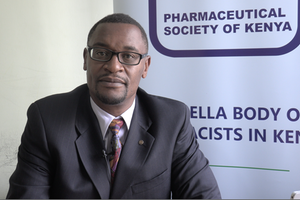
The most commonly abused drugs in Kenya include alcohol, tobacco, marijuana and heroin.
Jason, an engineering student at a public university in the capital city, can barely remember the last time he was sober.
The student is always under the influence of something. If it is not alcohol, it is cannabis, sometimes both.
On particularly rough days, Jason resorts to what he calls harder substances.
Yet only a trained eye would notice that the student is high on something.
He has mastered the art of keeping it together, never staggering or appearing intoxicated.
For Jason, it is all about getting through the tough mathematics and engineering concepts.
“I was once told that using this stuff makes one sharp. Honestly, it couldn’t be truer,” he says
Jason’s grades appear to back up his belief. He scored an impressive mean grade A of 84 points – the maximum points one can achieve – in the Kenya Certificate of Secondary Education (KCSE) examination two years ago. His university results have also been stellar.

New data reveal that adolescents and young adults account for more than half of all drug users.
As far as Jason is concerned, he will continue imbibing drugs to attain good grades.
Jason’s story is one of the many that put a face to the findings of a recent study by the National Authority for the Campaign Against Alcohol and Drug Abuse (Nacada).
The study by the government agency paints a worrying picture of drug and substance abuse among university students in Kenya.
Then, there is Ian, who has been abusing marijuana since 2014 when he was still in primary school.
Peer pressure and curiosity led him into the habit. A decade later, Ian has not stopped consuming the drug.
Now at university, he confesses using cannabis two times a day “to feel high and good”.
Unlike students who reside on campus, Ian puts up in a nearby estate – making it easy for him and his circle to evade detection by university officials and security.
“Only a handful of people know I am a cannabis user. Most of my classmates would never even imagine that,” he says.
Ian’s only challenge, he says, is getting money to sustain the habit.
“I have to put aside some amount specifically for the drugs,” he says.
And he cautions non-users or those curious about drugs.
“Just stay out of it. You don’t have to try drugs to be anything,” he says.
Despite his years of drug abuse, Ian has never had a “Damascus moment” – something that pushes him to quit. He, however, hopes to stop using drugs when he starts a family.
“I would never want to see any of my children use drugs,” he says.
Jason and Ian are only a fraction of university students addicted to drugs.
The Nacada report highlights the penetration of psychoactive substances in universities, including methamphetamine, prescription drugs, codeine syrup, ecstasy, GHB, LSD, psychedelics and ketamine.
The study, conducted across public and private universities, reveals a troubling trend in drug consumption, particularly through edibles.
Marijuana-laced cookies, mabuyu, lollipop and juice are becoming increasingly common on campus, making substance abuse almost impossible to detect.
The December 2023 to December 2024 study also shows that more female students are getting hooked to drugs.
A lecturer who asked not to be named admits that the drug problem is becoming a crisis.
“It’s deeply worrying,” the don says, recalling instances of students approaching him for advice on how to counsel colleagues struggling with addiction.
“It’s become very common. Weekend parties have turned into platforms for drug abuse,” the don says.
One of the most common methods of initiation into hard drugs, he says, is through snacks, especially cannabis-laced biscuits.

Alcoholism breaks families. But humanity has never found a common approach to the problem.
“Initiation is as simple as a friend offering you a cookie or lollipop. The students share such sweets or snacks casually again and again until one becomes dependant. It does not take long before the students is trapped into drug abuse,” he says.
The lecturer adds that female university students are becoming increasingly creative in concealing their use of drugs or addiction.
“They’ve found new ways to hide it. The girls are more creative than their male colleagues,” he says.
“It’s no longer about smoking or eating snacks. Some infuse these highly addictive substances into everyday items like sweets and drinks, making it very difficult to detect.”
He describes the trend as deeply worrying, adding that what starts as casual experiment at parties quickly develops into addiction.
“It is happening under our noses. By the time friends of the student or others know what is happening, it already too late,” he says.
The don’s account corroborates the Nacada report that shows that “smoked cannabis is the most available narcotic at 61.7 per cent, followed by cannabis edibles (47.6 per cent), cocaine (15.1 per cent) and heroin at 14.3 per cent).”
According to the Nacada study, drug abuse is no longer in the shadows.
“It is evolving, becoming more accessible, more discreet and increasingly normalised in Kenya’s universities,” it says.
The report urges university managers to establish long-term support programmes for recovering addicts.
These should include strong mentorship programmes, continuous guidance and counselling, and regular monitoring.
“The institutions need to establish vibrant recovery communities that celebrate sobriety, integrated with a strong component of continuous emotional and social support services for students on the recovery path,” the report says.
Makheti Lusweti, the Moi University Student Governing Council Academics Director, acknowledges the problem.
Lusweti says Moi University is committed to ensuring affected students get the necessary support.
He believes the Moi University administration is making an effort to reduce drug addiction and helping recovering students but adds that more still needs to be done.
“The drug problem is not rampant here but the Office of Peer Counselling has been reinforced with professionals. The Office of Social Affairs and Special Needs now has experts,” he says.
Lusweti, however, adds that the university should enhance student engagement to check negative peer influence.
“We need to create more engaging events so that students can be occupied in meaningful activities, especially outside of class time,” he says.








